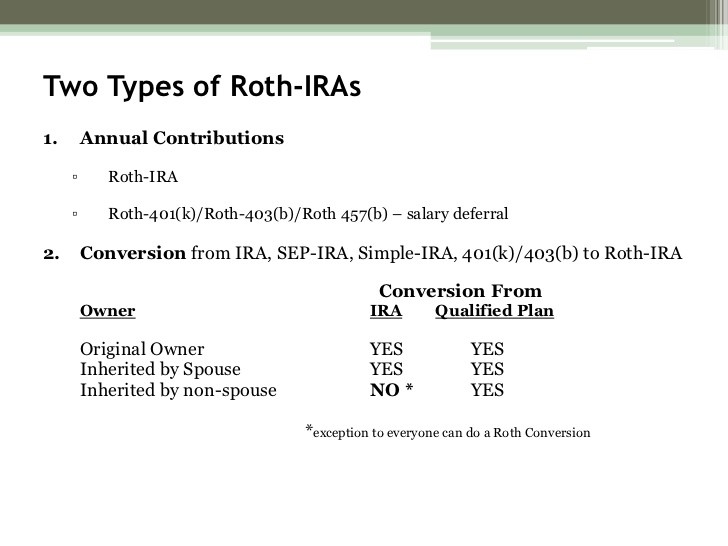Strategies For Your Roth 401(k)
Post on: 19 Июль, 2015 No Comment

Your employer might offer a Roth 401(k) as one of your retirement plan options. To learn more about Roth 401(k)s, read A Closer Look At the Roth 401(k). If you’ve already made the decision to elect the Roth option, it’s time to put some strategies together for maximizing your returns.
If you’re sure you want a Roth 401(k), don’t wait. In most cases, the earlier you start, the better your returns. The advantage of a Roth 401(k) is that you fund it with after-tax income, giving you the opportunity to pay taxes on that money today, rather than later in life when you may well be in a higher tax bracket. You want your tax rate to be as low as possible. Your tax rate is likely to be lowest when you’re young and early in your career.
When you’re older and have received promotions and raises, your tax rate will probably be higher. The earlier in your career you elect the Roth 401(k), the higher your savings over time – in theory. As of 2014, that’s a pretty safe guess. But as tax rates rise, that assumption becomes more of a bet – and those rising rates may come sooner than people think.
If you’re not the type who follows monetary policy (or aren’t quite sure what monetary policy is) you can read more here .
2. Hedge Your Bets
Nobody knows what will happen in the economy by the time your retirement date arrives. While it might not be something you want to think about, an adverse event could put you in a lower tax bracket than you are right now.
For these reasons, some financial advisers tell their clients to hedge their bets by having both a Roth and a traditional 401(k).
In the investment world, a hedge is an insurance policy; it removes a certain amount of risk. In this case, if you split your retirement funds into a traditional and Roth 401(k), you would pay half the taxes now – at what should be the lower tax rate – and half when you retire.
If your employer contributes matching funds to 401(k)s, it can match what you give to a Roth 401(k), but it will have to be done in a separate pre-tax account – so there’s a good chance that you’ll have two accounts anyway.
3. Know Your Limits
You can contribute a maximum of $17,500 in pre-tax or designated (post-tax) Roth money to your 401(k) retirement accounts. It doesn’t matter how you split the money between the two accounts.The limit, including matching funds from your employer, cannot exceed $52,000 as of 2014.
If you’re 50 or older, you can contribute an additional $5,500. The IRS calls this a catch-up contribution – designed for people close to retirement that are behind on retirement funding.
Contribute up to maximum your employer will match, but don’t contribute too much or there are likely to be penalties. If you fall into the IRS’ definition of highly compensated employee, there may be contribution limits. Check with your employer’s benefits department.
4. Fund a Roth IRA, Too
Once you contribute up to the employer match on your Roth 401(k), consider contributing the rest of the money you’re allowed to set aside to a Roth IRA instead. Other than the yearly contribution limit being only $5,500 ($6,500 if you’re 50 or older), most of the rules are the same as for the Roth 401(k).
However, the Roth IRA has some added benefits: You have more investment options and the rules for withdrawing funds are much more relaxed. You may be able to withdraw funds at any time and pay zero taxes or penalties. That’s not the point of a retirement account, but knowing you have more relaxed options with a Roth makes it easier to save money you’re worried you could need. See How To Use Your Roth IRA As An Emergency Fund .
5. Plan for No RMD
RMD, or required minimum distribution. mandates that those over age 70½ begin receiving payments from their IRA or 401(k). But RMDs are only for traditional 401(k)s and IRAs.
Roth accounts don’t have an RMD. There are no distribution requirements until the person passes away. This means you can continue earning tax-free interest on a Roth well into retirement if you don’t need the cash. This may shape how you manage your Roth accounts compared to any traditional accounts you also have.
6. Don’t Forget About It
Employee-sponsored retirement plans are easy to open and forget about. You’re busy and end up leaving the statements in the mail stack. Time flies by and you have little knowledge of your account balances or performance.
A retirement account isn’t meant for constant changes. But at least once a year, evaluate the performance of the funds you chose. If they’re constantly underperforming, it might be time for a change.
If you’re not well-versed in the investment world, it’s probably best to get the advice of a non-biased financial professional.
The Bottom Line
If you’re early in your career and believe that you’ll be in a higher tax bracket when you retire, a Roth 401(k) is probably a wise choice. Pick funds with low fees, monitor their performance, and consider combining your Roth 401(k) with a Roth IRA for diversification and possibly better performance. Try not to make large financial decisions alone. Seek the advice of a financial planner who can evaluate your individual financial needs.














